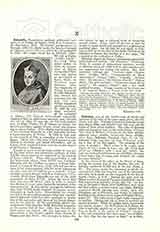

Yucatan, Archdiocese of (Yucatanensis), in the Republic of Mexico. Campeche and Tabasco are its suffragans. Its area is that of the state of the same name, 17,204 sq. miles, and its population 337,020 inhabitants (1910). Merida, the capital, is the residence of the bishop and governor. It is about 27 feet above the level of the sea and has a population of 61,999 (1910). There is a legend that long before the arrival of the Spanish in Mexico the Christian religion had been preached in Yucatan by Quetzalcoatl (see Mexico). Yucatan was the first region of the Mexican territory to receive the light of the Gospel in the sixteenth century; it was there that the first Mass was celebrated. It is said that in 1517 Francisco Hernandez de Cordoba, the discoverer and explorer of the region, founded the first parish. Leo X, believing the newly-discovered land to be an island, by the Bull “Sacri apostolatus ministerio”, dated January 27, 1518, created the Bishopric of Yucatan, under the name “Carolense” and placed it under the protection of “Santa Maria de los Remedios”. When it was known that Yucatan was part of the continent which Hernan Cortes was conquering, Clement VII made certain modifications (see Tlaxcala. and caused Father Julian Garces, appointed first Bishop of Yucatan, to make his residence at Tlaxcala when he arrived in Mexico, as the Spanish had abandoned the conquest of Yucatan for this new land. The first resident bishop was Francisco Toral, a Franciscan, who took possession on August 15, 1562, one year after his election: he assisted at the first and second Mexican councils.
Marcos de Torres y Rueda, twelfth bishop (1647), owing to dissensions between Juan Palafox, Bishop of Tlaxcala, and the Viceroy of New Spain, Count of Salvatierra, was named Viceroy of Mexico and entered into office, May 13, 1648; he died at the capital, April 22, 1649. Juan Gomez de Parada, twentieth bishop, governed the dioceses of Yucatan, Guatemala, and Guadalajara with great success. His successor, Ignacio Castorena y Ursfia, was the founder of the first newspaper published in Mexico (see Catholic Periodical Literature.—Mexico). Jose Maria Guerra, thirty-fifth bishop (d. 1863), lived during the famous war of caste which ruined almost the whole of Yucatan; his zeal, energy, and firmness prevented the city of Merida from falling into the hands of the revolting Indians. It was at the instance of Leandro Rodriguez de la Gala, his successor, that the new See of Tabasco was formed from parishes taken from the Diocese of Yucatan. The Province and Vicariate of Peten, situated in the republic of Guatemala, which ecclesiastically had belonged to Yucatan, became a part of the See of Guatemala. Believing that the colony of Belice was his dependency, the bishop sent missionaries there in 1864; this land, however, had been under the administration of priests sent from the Vicariate Apostolic of Jamaica since 1837. The present archbishop is Msgr. Tristschler y Cordova, appointed on November 11, 1906. The Diocese of Yucatan was suffragan of Mexico until 1891, when it became suffragan of the newly-created Archdiocese of Oaxaca. In 1895 the new See of Campeche was created from parishes taken from Yucatan, to which was added all the territory of Quintana Roo. The Archdiocese of Yucatan erected in 1906, has: a seminary and 30 students; 32 parochial schools and 9 Catholic colleges, with 6738 students. Protestants have erected 3 colleges, which have 79 students, and 2 churches.
CAMILLUS CRIVELLI

